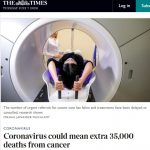Moving forwards on your brain tumour journey: Sarah’s story

In March 2018, Sarah was diagnosed with a meningioma. She reached out to brainstrust after searching for help and answers online, and has since received regular support from Jodie, our midlands support specialist, as well as fundraising many thousands of pounds with the support of her husband Paul and their FootGolf league.
brainstrust resources such as the brain box and fatigue book, together with coaching from Jodie, have helped Sarah move from a place where she felt lost and confused, to a place where she feels confident and part of a community.
“Thanks to brainstrust, I now feel like I am part of a community and feel comfortable and confident whenever I have needed to ask for help. I stopped feeling lonely and scared, as I now know there is always someone who will help. When you hear the words ‘you have a brain tumour’ your life changes in a split second. Having there has helped me to deal with it, and I will be forever grateful.”
Sarah has written previously about the difference our support has made for her, and thanks to Sarah completing three Progress Trackers since 2018, we can visualise it too.
Sarah’s progress
- When Sarah first connected with brainstrust, her average score was 2.3, meaning she started in a place where “things are difficult but I’m working on it”
- From July 2018 to April 2020, Sarah reported a 43% improvement (2/5 points) across all areas of well-being
- The greatest improvement has been in how supported, resourced and part of a community Sarah feels. She scored five for these areas, equating to “I’m as good as I can be in the circumstances”
“I have had email and phone support from Jodie, who is one of the support specialists. Whatever questions I have, or if I am struggling with things, I contact Jodie, who always helps me. We have recently started regular coaching sessions over the phone, as after my operation I was struggling with my confidence. Jodie has talked to me, listened to my worries and helped me to come up with ideas of how to rebuild my confidence.”
Sarah and Paul have been incredibly committed to their fundraising efforts, and they haven’t let the Coronavirus pandemic stop them!
During lockdown, the UK National FootGolf Club League has held two online race nights:
“From both events we have raised £131 for brainstrust through peoples donations and from an auction race where participants had the chance to become the horses owner.”
And now, thanks to Sarah, the Buxton Virtual Garden Trail is supporting brainstrust. People can enjoy beautiful gardens and stunning shots of nature from the comfort and safety of their home, with a pay-as-you-feel donation coming to brainstrust. Search for ‘The Buxton Garden Trail’ on Facebook to find out more.





